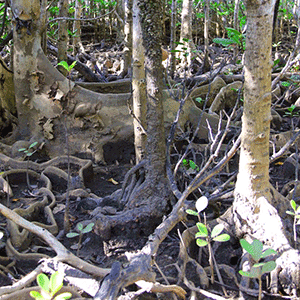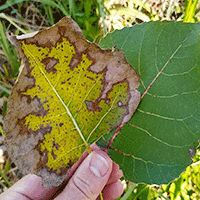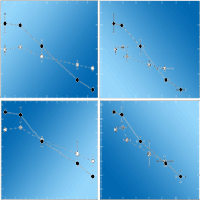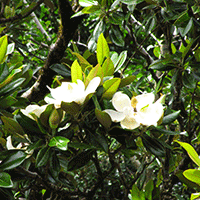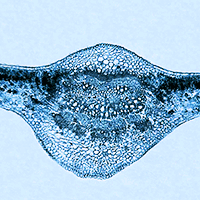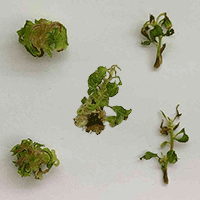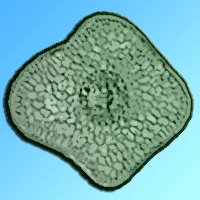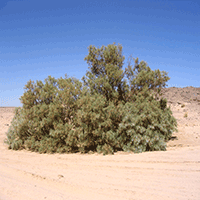
Effect of salt and drought on growth, physiological and biochemical responses of two Tamarix species
Victoria Dawalibi (1) , Maria Cristina Monteverdi (2), Stefano Moscatello (3), Alberto Battistelli (3), Riccardo Valentini (1)
iForest - Biogeosciences and Forestry, Volume 8, Issue 6, Pages 772-779 (2015)
doi: https://doi.org/10.3832/ifor1233-007
Published: Mar 25, 2015 - Copyright © 2015 SISEF
Research Articles
Abstract
Tamarix trees are considered of particular interest for afforestation and reforestation of degraded areas prone to salinity and drought. In this study, a comparison of the performance and physiological responses of two species of Tamarix grown in saline and dried soils was carried out. Stem cuttings of T. aphylla and T. jordanis were collected from a location in the Negev desert and the plantlets obtained were subjected to four different soil treatments under semi-controlled conditions for 14 days. The treatments were: fresh water (C); salt (S: 150 mM of NaCl); drought (D: 50% field capacity); and a combined stress (DS: 150 mM of NaCl + 50% FC). Results showed a higher tolerance to salt stress of T. jordanis as compared with T. aphylla. The maintenance of high amount of cell carbohydrates, the high capacity of carbon assimilation and the active growth were considered as markers of salt tolerance in Tamarix spp. T. aphylla showed better performances in terms of growth and biomass production than T. jordanis in dry conditions. The high accumulation of sugars found in the leaves of T. aphylla under mild drought is considered a mechanism of acclimatization. The combined stress (salt+drought) lowered the performance of plants as compared to salt and drought stress applied alone. The possible role of the accumulation of proline observed in the leaves of both species under stressful conditions is discussed.
Keywords
Authors’ Info
Authors’ address
Riccardo Valentini
University of Tuscia, Department of Forest Environment and Resources (DISAFRI), v. S. Camillo de Lellis snc, I-01100 Viterbo (Italy).
Consiglio per la Ricerca in Agricoltura e l’Analisi dell’Economia Agraria, Forestry Research Center (CRA-SEL), v.le Santa Margherita 80, I-52100 Arezzo (Italy)
Alberto Battistelli
Institute of Agro-Environmental and Forest Biology (IBAF-CNR), v.le G. Marconi 2, I-05010 Porano, Terni (Italy)
Corresponding author
Paper Info
Citation
Dawalibi V, Monteverdi MC, Moscatello S, Battistelli A, Valentini R (2015). Effect of salt and drought on growth, physiological and biochemical responses of two Tamarix species. iForest 8: 772-779. - doi: 10.3832/ifor1233-007
Academic Editor
Silvano Fares
Paper history
Received: Jan 02, 2014
Accepted: Oct 16, 2014
First online: Mar 25, 2015
Publication Date: Dec 01, 2015
Publication Time: 5.33 months
Copyright Information
© SISEF - The Italian Society of Silviculture and Forest Ecology 2015
Open Access
This article is distributed under the terms of the Creative Commons Attribution-Non Commercial 4.0 International (https://creativecommons.org/licenses/by-nc/4.0/), which permits unrestricted use, distribution, and reproduction in any medium, provided you give appropriate credit to the original author(s) and the source, provide a link to the Creative Commons license, and indicate if changes were made.
Web Metrics
Breakdown by View Type
Article Usage
Total Article Views: 57228
(from publication date up to now)
Breakdown by View Type
HTML Page Views: 47484
Abstract Page Views: 3803
PDF Downloads: 4532
Citation/Reference Downloads: 26
XML Downloads: 1383
Web Metrics
Days since publication: 3951
Overall contacts: 57228
Avg. contacts per week: 101.39
Citation Metrics
Article Citations
Article citations are based on data periodically collected from the Clarivate Web of Science web site
(last update: Mar 2025)
Total number of cites (since 2015): 8
Average cites per year: 0.73
Publication Metrics
by Dimensions ©
Articles citing this article
List of the papers citing this article based on CrossRef Cited-by.
References
Nuovi approcci in Tamarix spp. per l’identificazione tassonomica e la caratterizzazione funzionale in condizione si stress salino [New approaches for taxonomic identification and functional characterization of Tamarix spp. under salt stress conditions]. PhD Thesis, Università degli Studi della Tuscia, Viterbo, Italy, pp. 144.
Gscholar
The genus Tamarix. Israel Academy of Sciences and Humanities, Jerusalem, Israel, pp. 209.
Gscholar
Adaptation à la sécheresse et notion d’ideotype chez le blé dur. II: Caractère physiologique d’adaptation [Drought adaptation and notion of ideotype in the durum wheat (Triticum durum Desf.). II. Physiological characters of adaptation]. Elsevier, INRA, Agronomie 12: 381-393. [in French]
CrossRef | Gscholar
Assessment of the salinity tolerance of eight Sonora desert riparian trees and shrubs. Final Report. Desert Research Institute, University of Nevada Biological Sciences Center, Reno, NE, USA, pp. 102.
Gscholar
Studies in California ornamental plants: 3. The tamarisks. Journal of California Horticultural society 12: 76-83.
Gscholar
Reflections on tamarisk bashing. In: Proceedings of the “1st Annual Meeting of the Society of Ecological Restoration - Restoration ’ÂÂ89: the new management challenge” (Hughes HG, Bonnicksen TM eds). Oakland (CA, USA) 16-20 Jan 1989. The University of Wisconsin Arboretum, Society for Ecological Restoration, Madison, WI, USA, pp. 59-68.
Gscholar
Ecological studies on Tamarix aphylla (L.) Karst. III. The salt economy. Plant soil 4: 356-364.
Gscholar
Rooting ad shoot growth of stem cuttings of saltcedar (Tamarix chinensis Lour) under salt stress. Pakistan Journal of Botany 42 (6): 4133-4142.
Gscholar

